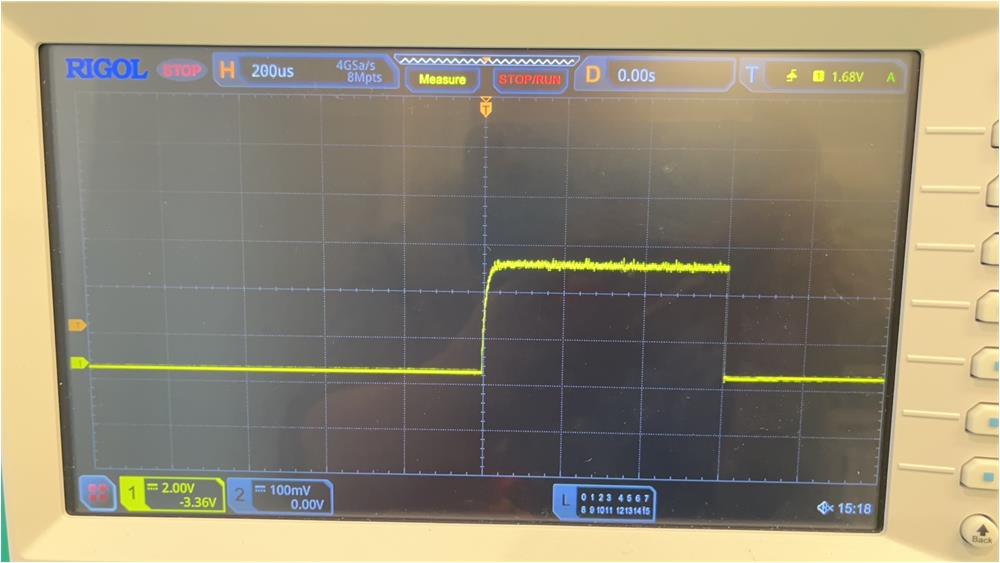TIDUF91 December 2024
4.4 Test Results
When the test setup is ready, write the deploy command, 3C 84 D8, the pyro-fuse is triggered (only when using the real pyro-fuse), and a trigger waveform can be obtained on the oscilloscope. Figure 4-8 illustrates the test result. The chip is supposed to deploy for approximately 2ms with the current limited to 1.2A, which is as expected.
 Figure 4-8 TIDA-020075 Test Result
Figure 4-8 TIDA-020075 Test Result